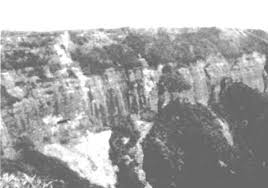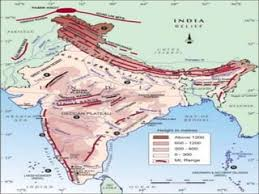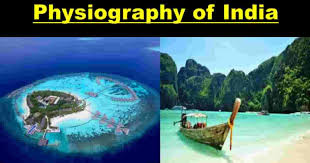Structure and Physiography – Complete Guide For Class 11 Geography Unit 2 Chapter 2
Welcome to iPrep, your Learning Super App. Our learning resources for the chapter, “Structure and Physiography” in Geography for Class 11th are designed to ensure that you grasp this concept with clarity and perfection. Whether you’re studying for an upcoming exam or strengthening your concepts, our engaging animated videos, practice questions and notes offer you the best of integrated learning with interesting explanations and examples.
The “Structure and Physiography” chapter in CBSE Class 11th Geography provides a fascinating look at the natural foundation of India’s landscape. Through this chapter, students dive into the geological evolution and varied physical features that characterize the Indian subcontinent. From the majestic Himalayas to the expansive Indo-Gangetic plains, each region reveals a unique story shaped by millions of years of geological activity. This chapter not only broadens students’ understanding of India’s physical geography but also highlights the critical role these landscapes play in the nation’s climate, biodiversity, and human settlement patterns.
Objectives Of Learning – Structure and Physiography of India
This chapter explores the geological structure and physical features of India, examining the major regions and their unique characteristics. It delves into the formation of the Indian subcontinent, the geological processes that have shaped its landscape, and the diverse physical features found across the country.
India is a geographically diverse country with a wide range of physical features, from towering mountains to vast plains and coastal regions. This chapter provides a comprehensive overview of the geological structure and physiography of India, examining the key regions and their characteristics.
Now that we have explored the importance of the chapter, let’s outline the objectives of studying it.
- To understand the geological structure of India.
- To explore the major physiographic regions of India.
- To analyze the characteristics and significance of each region.
Now let’s explore the various sections of the chapter.
Firstly, in order to understand the geological diversity of India, let’s delve into the section ‘Geological Regions’ of the chapter ‘Structure and Physiography’.
Geological Regions
This section outlines the major geological divisions that have shaped the Indian subcontinent. India can be divided into three major geological regions: the Peninsular Block, the Himalayas and other Peninsular Mountains, and the Indo-Ganga-Brahmaputra Plain.
Let’s understand these divisions in detail.
- (i) The Peninsular Block
- The Peninsular Block is the oldest geological region in India, formed by Precambrian rocks.
Features:
- Oldest landmass, with rich mineral resources.
- Stable block with low seismic activity.
- (ii) The Himalayas and other Peninsular Mountains
- The Himalayas are the world’s highest mountain range, formed due to the collision of tectonic plates.
- Other Peninsular Mountains include the Aravallis, Vindhyas, and Satpuras.
Features:
- Home to the highest peaks in the world, including Mount Everest.
- Significant for their impact on climate and as a source of major rivers.
- (iii) Indo-Ganga-Brahmaputra Plain
- The Indo-Ganga-Brahmaputra Plain is a vast alluvial plain formed by the deposition of sediments by the rivers.
Features:
- Fertile agricultural land, supporting a dense population.
- Prone to floods but crucial for India’s agriculture.
Now, in order to understand the physical features of India, let’s delve into the section ‘Physiography’ of the chapter ‘Structure and Physiography’.
Physiography
India’s physiography is characterized by its diverse landscapes, which have been shaped by geological processes over millions of years.
- (1) The Northern and North-eastern Mountains
- This region includes the Himalayas, which are divided into three ranges—the Himadri, Himachal, and Shiwaliks.
- The Himalayas are the highest mountain range in the world, with peaks reaching over 8,000 meters.
- The northeastern mountains include the Karakoram, Hindu Kush, and Naga Hills.
Features:
- Acts as a climatic barrier, influencing monsoon patterns.
- Source of perennial rivers like the Ganges and Brahmaputra.

- (2) The Northern Plain
- The Northern Plain is a vast alluvial plain formed by the deposition of sediments by the Indus, Ganga, and Brahmaputra rivers.
- Extending from the Punjab Plain in the west to the Assam Valley in the east, this is one of the most fertile and densely populated regions in India.
Features:
- Formed by alluvial deposits from the Himalayan rivers.
- Crucial for agriculture, particularly rice and wheat cultivation.

- (3) The Peninsular Plateau
- The Peninsular Plateau is a large plateau region formed by ancient crystalline rocks.
- It is further divided into the Deccan Plateau, the Central Highlands, and the Northeastern Plateau.
The Deccan Plateau:
A large plateau making up most of southern India, characterized by its black soil, ideal for cotton cultivation.
The Central Highlands:
Located to the north of the Deccan Plateau, this region is known for its rich biodiversity and mineral wealth.
The Northeastern Plateau:
Known for its rich coal deposits, this plateau is an extension of the Chotanagpur Plateau.

- (4) The Indian Desert
- The Indian Desert, also known as the Thar Desert, is a vast arid region in western India.
Features:
- Characterized by arid climate, sandy terrain, and sparse vegetation.
- Supports unique desert flora and fauna.

- (5) The Coastal Plains
- The coastal plains of India are narrow strips of land along the Arabian Sea and the Bay of Bengal.
Features:
- The Western Coastal Plain is narrow and fertile.
- The Eastern Coastal Plain is broader and marked by river deltas.

- (6) The Islands
- India has several islands, including the Andaman and Nicobar Islands and the Lakshadweep Islands.
Features:
- Volcanic origin in the Andaman and Nicobar group.
- Coral atolls in the Lakshadweep group.


Finally, as we have gained comprehensive knowledge about the chapter “Structure and Physiography”, let’s reflect on the overall learning value of this important lesson.
Overall Learning Value of the Chapter
The chapter “Structure and Physiography” offers a comprehensive understanding of India’s physical landscape. By studying this chapter, students gain insight into how India’s diverse geological and physiographic features have influenced its climate, biodiversity, and human settlement patterns. This knowledge is crucial for understanding India’s natural resources, environmental challenges, and the role of geography in shaping the nation’s history and development.
Let’s Conclude
In conclusion, CBSE Class 11th Geography Chapter “Structure and Physiography” equips students with an in-depth understanding of India’s geological and physical landscape. Through this chapter, learners explore the diverse regions that make up India’s physiography, from the towering Himalayas to the fertile Northern Plains and the arid Indian Desert. With these insights, students appreciate how the “Structure and Physiography” of Class 11th Geography influences climate, biodiversity, and resource distribution across the nation. By mastering this chapter, students build a solid foundation in physical geography, which is essential for understanding broader environmental issues and India’s unique geographical characteristics.
The chapter “Structure and Physiography” for Class 11th Geography is a gateway to discovering how physical features have shaped cultural, economic, and historical aspects of India, making it an invaluable component of their academic journey.
Practice questions on Chapter 2 - Structure and Physiography
Get your free Chapter 2 - Structure and Physiography practice quiz of 20+ questions & detailed solutions
Practice Now








